

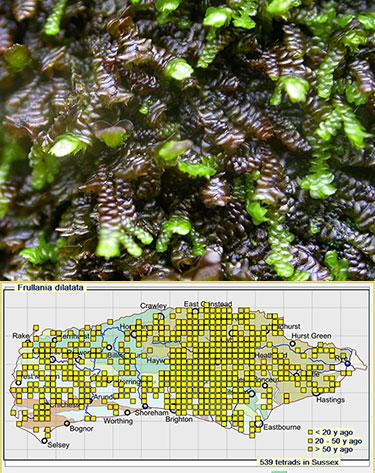
Frullania dilatata (top) and map showing distribution of records below.
Photo: Brad Scott
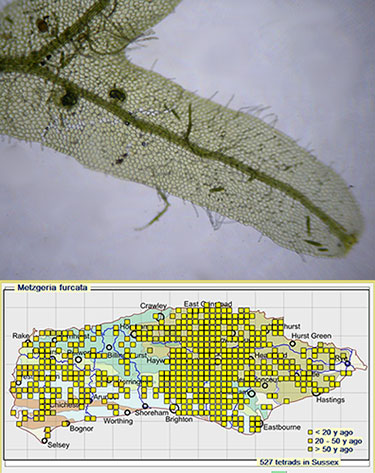
Metzgeria furcata (top) and map showing distribution of records below.
Photomicrograph: Brad Scott
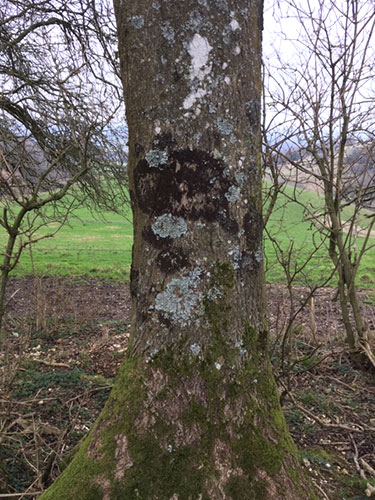
Circular patch of Frullania dilatata on tree trunk.
Photo: Sue Rubinstein
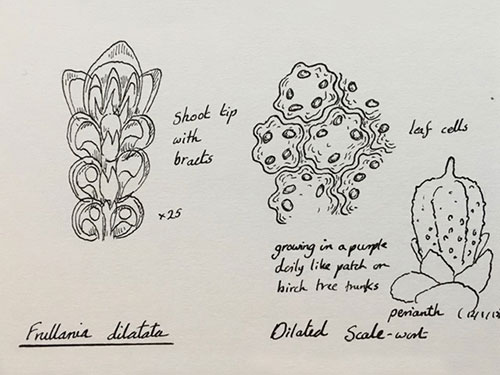
Frullania dilatata: Dilated Scalewort, structure and detail of leaf cells.
Drawing: Sue Rubinstein
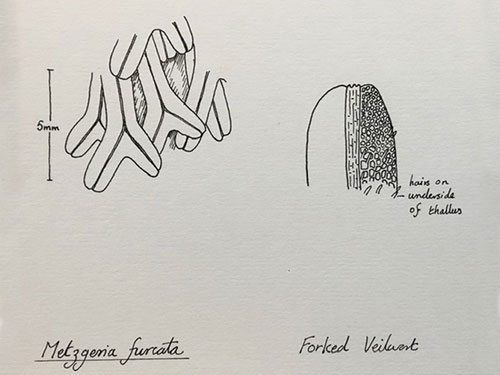
Metzgeria furcata: Forked Veilwort, structure and detail of thallus.
Drawing: Sue Rubinstein
When you are out and about, do have a look for some common liverworts on trees. There are two which are especially common and are likely to be in every part of Sussex. So far they have only been recorded in about half the county, and the maps are consequently more of an indication of the distribution of bryologists than the plants, so all new records are valuable.
Frullania dilatata is very distinctive, and is brown or green, often observed in neat round patches on a wide range of deciduous tree trunks. Its leaf lobes are very round and only about 1mm across.
Metzgeria furcata is also quite distinct, though there are two similar species. It is green and is forked and flat, with a strong midrib, and often found growing with Frullania dilatata. It looks like little green ribbons about 1mm wide. The two similar (though less common) species are Metzgeria violacea and Metzgeria consanguinea; they both have little granules (gemmae) either at their tips or along their margins, respectively.
We want to see how many records we can receive by the end of February, and especially how many new tetrad records there will be, so please have a look at your local trees. Please submit any records with some photos to iRecord, or with location, grid reference and date to @Trichocolea on Twitter, or by email to sue@rubinstein.plus.com.
There are regular field meetings recording the mosses and liverworts of the area organised by the South-East Group of the British Bryological Society, to which all are welcome, and you are encouraged to sign up to our email list. You can also follow the bryophyte recording activity in the county on our blog: https://sussexbryophytes.wordpress.com/bbs-se-group/.
Every month it is our aim to highlight a species that is “in-season” and, although not necessarily rare or difficult to identify, has been highlighted by our local recording groups as being somewhat under-recorded and for which new records would therefore be welcomed.
If you or your recording group are aware of species such as this then please contact Bob Foreman.